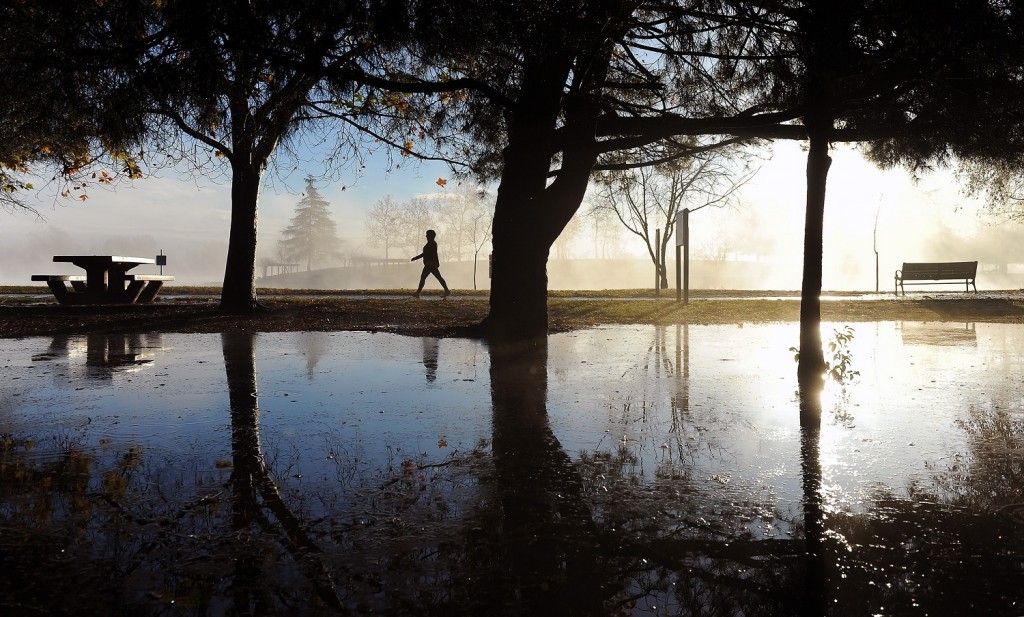- California Assembly OKs highest minimum wage in nation
- S. Korea unveils first graphic cigarette warnings
- US joins with South Korea, Japan in bid to deter North Korea
- LPGA golfer Chun In-gee finally back in action
- S. Korea won’t be top seed in final World Cup qualification round
- US men’s soccer misses 2nd straight Olympics
- US back on track in qualifying with 4-0 win over Guatemala
- High-intensity workout injuries spawn cottage industry
- CDC expands range of Zika mosquitoes into parts of Northeast
- Who knew? ‘The Walking Dead’ is helping families connect
Official: El Nino could signal easing of California drought

FILE – A walker takes advantage of the clearing skies to stroll past rain puddles at Lake Balboa Park in Lake Balboa, Calif., Thursday, Jan. 7, 2016. (AP Photo/Michael Owen Baker)

This file photo shows snow on a tree and on the ground in South Lake Tahoe, Calif. (AP Photo/Tahoe Daily Tribune, Isaac Brambila)
FRESNO, Calif. (AP) — In the strongest indication yet that the California drought could be easing, officials said strict water conservation orders could be dramatically scaled back or even ended if El Nino storms keep pummeling the state into the spring.
The assessment came amid encouraging results from Tuesday’s measurement of the Sierra Nevada snowpack, which provides a third of the state’s water during the spring runoff when it feeds rivers and replenishes depleted reservoirs.
The water content of the snowpack now stands at 130 percent of normal for this time of year.
Come April, when the snowpack is typically at its highest level, officials intend to revisit the conservation plan. By then, they should know the full impact of the heralded El Nino system — a warming of the Pacific Ocean that alters weather worldwide and is associated with stormy California winters.
Brown ordered the cutbacks last year, saying mandatory conservation was imperative because the drought could drag past this year.
The effort slipped in December when residents and businesses used 18 percent less water compared to the same period of 2013. It was the worst showing since Brown set the goal in June.
However, the state is still on track to beat Brown’s goal, officials said.
In extending the conservation order, the water board gave a slight break to cities that are particularly hot and dry or quickly growing.
Places that have implemented desalination or developed efficient ways to recycle water also received consideration on their conservation mandate.
Officials said the conservation goal could drop closer to an average of 20 percent statewide after the breaks are implemented.
Those breaks still don’t go far enough, said Robert Roscoe, general manager of the Sacramento Suburban Water District.
He said his district invested $120 million in groundwater storage a decade ago, making Sacramento drought-proof.
“We did precisely what we were supposed to do,” Roscoe said. “We anticipated a drought, were proactive and we made a huge investment.”















